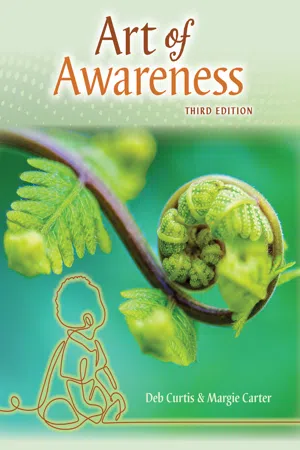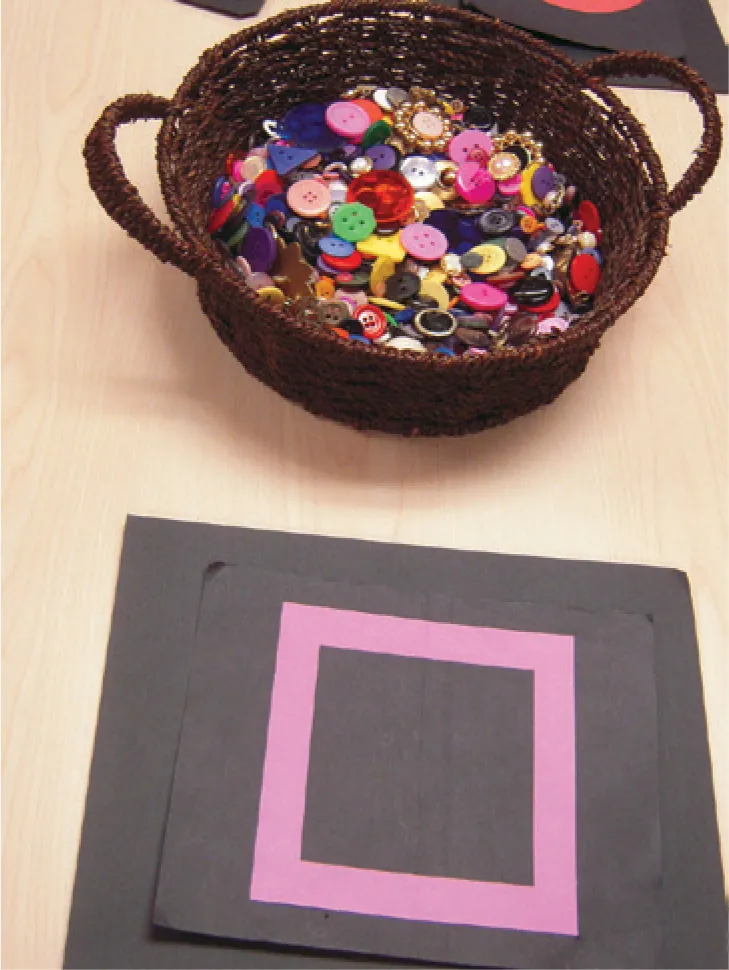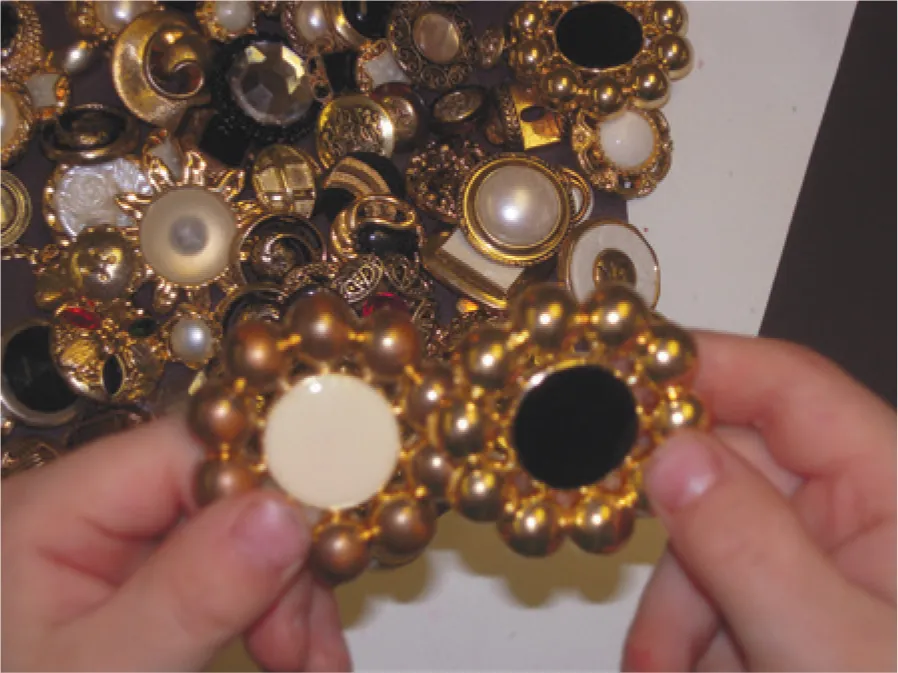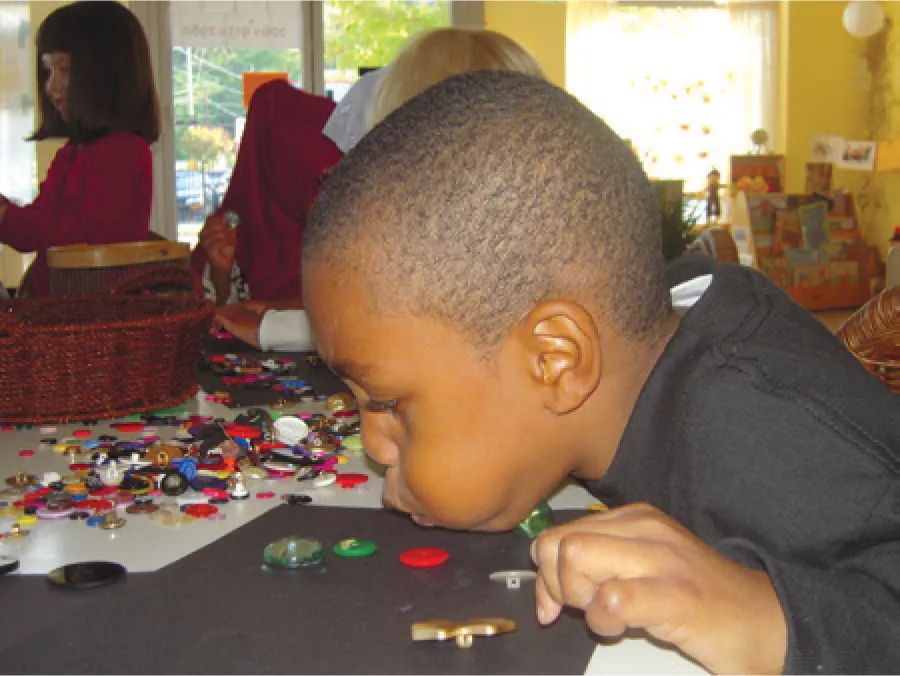
eBook - ePub
The Art of Awareness
How Observation Can Transform Your Teaching
- English
- ePUB (mobile friendly)
- Available on iOS & Android
eBook - ePub
About this book
With new chapters and updates from early childhood leaders Deb Curtis and Margie Carter invite early childhood educators to learn the art and skill of observation.
The art of observing children is more than merely the act of watching them—it is also using what you see and hear to craft new opportunities in your classroom. This resource provides a wealth of inspiration and practice. It will help early childhood educators learn to observe in new ways, witness children's remarkable competencies as they experience childhood, and find new joy in their work with children.
The third edition updates include
New information on schema theory including a list of the definitions of schemas
Updated stories that reflect schema explorations and focus on observing children's ability to get along
Added information on identity development and the anti-bias goals
New chapter on observing children using their bodies
New QR codes to videos to continue learning
Updates on technology and approaches to keeping observations at the center of required assessments
The art of observing children is more than merely the act of watching them—it is also using what you see and hear to craft new opportunities in your classroom. This resource provides a wealth of inspiration and practice. It will help early childhood educators learn to observe in new ways, witness children's remarkable competencies as they experience childhood, and find new joy in their work with children.
The third edition updates include
Frequently asked questions
Yes, you can cancel anytime from the Subscription tab in your account settings on the Perlego website. Your subscription will stay active until the end of your current billing period. Learn how to cancel your subscription.
No, books cannot be downloaded as external files, such as PDFs, for use outside of Perlego. However, you can download books within the Perlego app for offline reading on mobile or tablet. Learn more here.
Perlego offers two plans: Essential and Complete
- Essential is ideal for learners and professionals who enjoy exploring a wide range of subjects. Access the Essential Library with 800,000+ trusted titles and best-sellers across business, personal growth, and the humanities. Includes unlimited reading time and Standard Read Aloud voice.
- Complete: Perfect for advanced learners and researchers needing full, unrestricted access. Unlock 1.4M+ books across hundreds of subjects, including academic and specialized titles. The Complete Plan also includes advanced features like Premium Read Aloud and Research Assistant.
We are an online textbook subscription service, where you can get access to an entire online library for less than the price of a single book per month. With over 1 million books across 1000+ topics, we’ve got you covered! Learn more here.
Look out for the read-aloud symbol on your next book to see if you can listen to it. The read-aloud tool reads text aloud for you, highlighting the text as it is being read. You can pause it, speed it up and slow it down. Learn more here.
Yes! You can use the Perlego app on both iOS or Android devices to read anytime, anywhere — even offline. Perfect for commutes or when you’re on the go.
Please note we cannot support devices running on iOS 13 and Android 7 or earlier. Learn more about using the app.
Please note we cannot support devices running on iOS 13 and Android 7 or earlier. Learn more about using the app.
Yes, you can access The Art of Awareness by Deb Curtis,Margie Carter in PDF and/or ePUB format, as well as other popular books in Education & Early Childhood Education. We have over one million books available in our catalogue for you to explore.
Information
Chapter 1 A New Way of Being with Children: An Overview of the Study Sessions
It takes practice for us to recover this ability to see, or before that, the gift of wanting to see. For so many years we have been learning to judge and dismiss—I know what that thing is, I’ve seen it a hundred times—and we’ve lost the complex realities, laws, and details that surround us. Try looking the way the child looks—as if always for the first time.
—CORITA KENT AND JAN STEWARD

As you read the following story about Karina’s classroom, consider the role that observation plays in her teaching. How does her close attention to the children’s knowledge and interests influence what happens in her classroom?
As Karina sets up the room for her day with children, she decides to offer buttons in a new way. She takes them off the shelf and places them on one of the tables as an invitation for the children to discover. She puts the buttons in a basket and lays out some pieces of construction paper with different shapes glued on them. Karina is in the early stages of shifting her teaching away from the practice of making all table activities teacher-directed lessons. She’s very curious about what the children will do when they discover these materials she’s placed on the table.
The first few children who approach the table seem hesitant. They ask Karina what they are supposed to do. She smiles and says, “You are welcome to play with the buttons. See what you can discover.” As these girls sit down, several others join them and the fun begins. The children sift through the buttons, describing what they are discovering and finding different ways to set them on the paper. Karina stays close by, noticing how the children are investigating the buttons and periodically describing what she sees them doing. She does her best to avoid asking questions such as “What color is that?” or “How many buttons do you have?” It’s new for her just to take a few notes and photos of things the children are doing and saying. She’s eager to learn more about their interests and the experiences that come out during their play.

The first thing that strikes Karina is the variety of ways children explore the buttons. Some seem quite focused and serious. Others are exuberantly grabbing, relishing the abundance of buttons. Some children have begun sorting and classifying the buttons by color, size, or shape. One child starts a treasure hunt, trying to find all the big buttons with “gold petals on the outside.” Another child picks up random buttons one at a time and then methodically places them on her paper. One of the quieter solo workers at the table creates what is clearly the representation of a person.

After putting buttons on his paper, one child discovers that if he blows on a button, it will scoot across the table. He is thrilled with his discovery, calling out, “Look! Look what I did! Look what I did! It’s flying. Flying up. That one jumped.” Karina comes over for a closer look. “Wow, you really made a discovery. You can use your breath to move the air so it will move the buttons.” Before long, others join him in this activity. They invent a button-blowing game, making up rules as they go along. Karina is amazed that the children have used the buttons in ways that never would have occurred to her. At one point, she turns her camera around and shows one of the children a series of pictures she has captured. It is the progression of ideas the child has had over the last twenty minutes. The girl is eager to describe what she was doing in every photo.


Karina realizes she is puzzled by something. She notices that none of the children seem to make use of the shapes on the paper for their button work. In fact, several children have turned the paper over so the blank side is facing up. She wonders what this means about their exploration of space and lines. She can’t wait to talk with her assistant teacher about all her observations so they can consider how they might offer the buttons next time.

This small glimpse of Karina’s work with children is rich with the elements of the teaching approach presented in this book. Working with children in this way is quite different from focusing on cookie-cutter curriculum activities. It also goes beyond traditional observation practices, in which teachers collect data primarily for the purpose of assessment and measuring outcomes. While this is a valid reason for observing, it is more limited than what we as authors are suggesting in this book. In fact, what you see in Karina is a teacher engaged in ongoing professional development. She is practicing close observation, flexible thinking, risk-taking, and working without a known outcome. She demonstrates the ability to move in and out of analysis while staying in the present moment. This ability helps her use the children’s exploration as a source of planning, not to mention inspiration.
When approaching observation in this open-ended way, teachers must view children as competent creators of their own understandings. They see children as individuals who deserve the time and attention needed for their experiences to unfold with deeper meaning. Teachers like Karina see the richness of these childhood moments and value children’s perspectives and pursuits. Teachers who use this approach spend their time observing children, working to uncover their point of view and understandings. They do not spend time planning lessons and filling out developmental checklists. They use their observations to guide their responses and ongoing planning. They then draw on them for filling out developmental data or school-readiness assessments.
Reread the story, study the photos, and notice the specific things Karina is doing in her teaching practice.
- Karina provides open-ended materials for the children to explore. She understands the kinds of materials that engage children. She chooses materials with texture, beauty, complexity, and a range of possibilities for use.

- She offers materials with attention to order and aesthetics, which will call forth the children’s interest and help them focus on the possibilities.

- Karina observes closely and documents the details of ordinary moments of the children’s explorations and actions. She sometimes spontaneously shares her observations with the children by describing what she is seeing and showing them photos of their work.

- Karina shares her delight in what the children are doing. She asks open-ended questions and avoids questions that seek a particular answer, but rather keeps a curious, open mind, wondering why the children are pursuing particular activities.

- Even when a child uses the buttons in an unexpected way, such as blowing them, Karina admires his ingenuity. She does not offer a rule.

- Karina is eager to share her observations with other teachers and the children’s families to see if their perspectives can suggest additional ideas about what is occurring and what might be offered next.


Why Study Sessions?
Because of the many demands and distractions teachers face, learning to pay close attention to children requires systematic study and ongoing practice. This book offers you that opportunity. The study sessions were originally designed as a college course to counter the notion that observing children is a cumbersome task. The sessions offer you an organized system that will help you become aware of children in a new way. Through practice, you will discover that developing the art of awareness is one of the most stimulating and nourishing things you can do for yourself and for children. It will make your job easier and more enjoyable.
You will find that these study sessions are not designed as checklists to use or facts to learn. Rather, they offer new ideas, activities, and experiences to help you invent a different way of be...
Table of contents
- Cover
- Title Page
- Copyright
- Dedication
- Contents
- Acknowledgments
- Two Voices within a Teacher
- Introduction
- Chapter 1. A New Way of Being with Children: An Overview of the Study Sessions
- Chapter 2. Study Session: Learning to See
- Chapter 3. Study Session: Observing for Children’s Perspectives
- Chapter 4. Study Session: Observing Children’s Lively Minds
- Chapter 5. Study Session: Observing How Children Use Their Senses
- Chapter 6. Study Session: Observing How Children Seek Challenge and Risk through Active Play
- Chapter 7. Study Session: Observing How Children Explore, Invent, and Construct
- Chapter 8. Study Session: Observing How Children Connect with the Natural World
- Chapter 9. Study Session: Observing How Children Seek Power, Drama, and Adventure
- Chapter 10. Study Session: Observing Children’s Eagerness for Drawing, Symbolic Representation, and Literacy
- Chapter 11. Study Session: Observing How Children Form Relationships and Negotiate Conflict
- Chapter 12. Study Session: Observing Children with Their Families
- Chapter 13. Getting Organized to Observe and Study Your Documentation
- Chapter 14. Using and Sharing Your Observations with Others
- Chapter 15. Using Observations for Planning and Assessment
- References
- Additional Resources
- Index